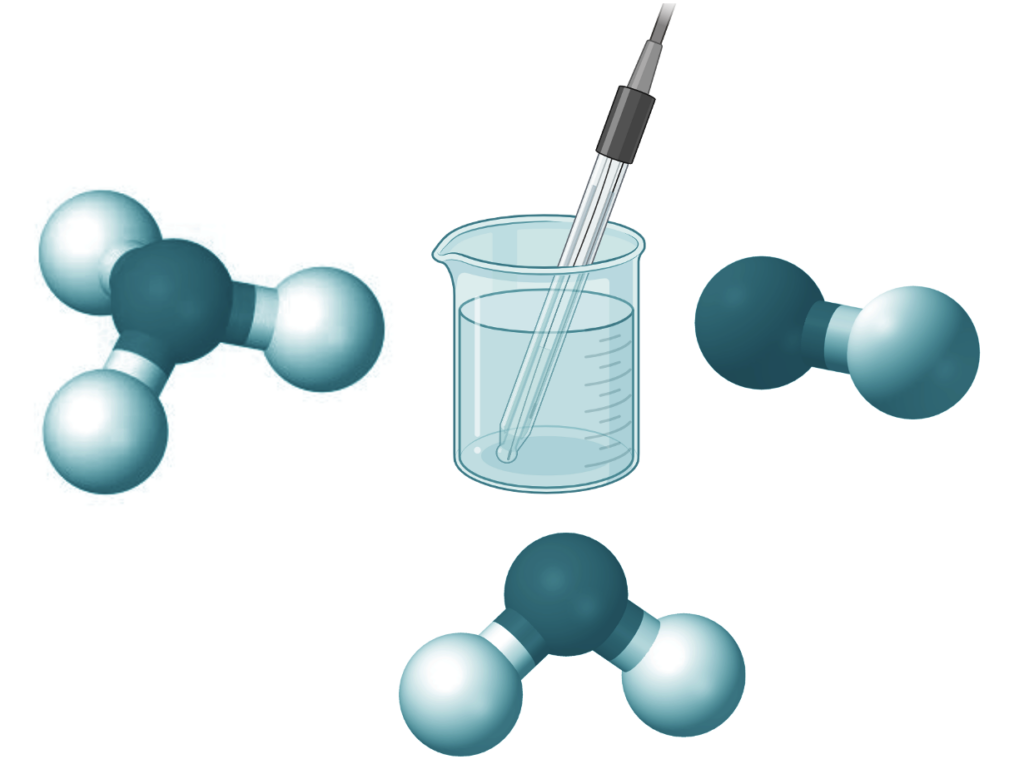How pH impacts beer quality
Paying close attention to pH can help ensure good brewhouse efficiency, product stability, and flavour outcomes. Here, we’ll discuss the key moments in your process where pH impacts beer quality!

pH: what is it?
pH is the concentration of ionized hydrogen, or protons, in a water-based solution. The lower the value below 7 (which is considered “neutral”), the greater the acidity or dissociated proton concentration. It’s usually expressed as hydronium, or H3O+. Above 7, hydrogen ionizes to a negative form with oxygen to form hydroxide (OH-), which is basic. These are both ionized forms of water, H20: one has an extra proton, the other has one missing.
How does pH impact mash quality?
Barley enzymes that carry through the malting process only work within certain pH ranges. Meanwhile, phosphates and other basic molecules are carried into the mash with the grain and interact with acids present. Metals like calcium can behave as acids and react with these basic molecules to precipitate (or drop out of solution). Optimizing your mash efficiency relies in part on optimizing these acid-base interactions.
What does pH tell us about fermentation?
First, pH is heavily impact by fermentation: you can see this in the first few days of a fermentation as the pH plummets. This is because yeast are producing organic acids and carbon dioxide through metabolism, some of which get released into the surrounding liquid to create an acidic environment where many microbes can’t survive. With the production of ethanol over the same period, it gives the yeast a competitive advantage.
A high finishing pH can indicate a less healthy fermentation and acetaldehyde or higher alcohol risk, as it might relate to low yeast metabolism and lower acid production. However, because of interference from mash factors, this is a blunt instrument. Free amino nitrogen is a specific indicator of fermentation health, since it relates directly to yeast cell growth and metabolic activity. Check out our writeup on FAN for more info on that.
How does pH impact visual quality?
While it hasn’t been well studied, some literature suggests that there are pH ranges in which haze forms more easily. This is best assessed by each brewery and by brand, but key to remember is that most haze particulate is caused by interactions of barley proteins with barley and hop tannins. The way proteins “fold” in solution (think of how a rope would fold if you dropped it off a building) depends largely on pH. Tannins will interact best with proteins within a pH range in which these haze-active proteins fold just right. We can help you establish and meet pH targets to ensure haze stability.
How does pH tell on shelf stability?
Many microbes that spoil beer produce acids while they do so. These include wild yeasts and lactic acid bacteria. Others that require higher pH to spoil beer, such as Megasphaera and Pectinatus, tend to maintain pH while they grow inside the product. So pH isn’t always a good indicator of spoilage. However, assuming you trust your pH meter, if you measure pH drops in the weeks or months after packaging a beer, chances are good this is driven by microbial activity.
We hope this helps you understand how pH impacts beer quality!

 Back to Blog
Back to Blog